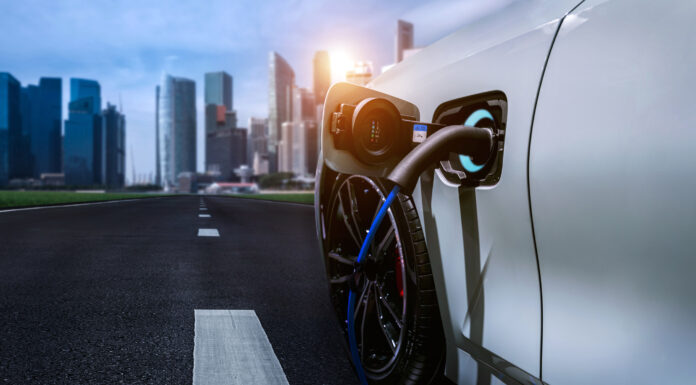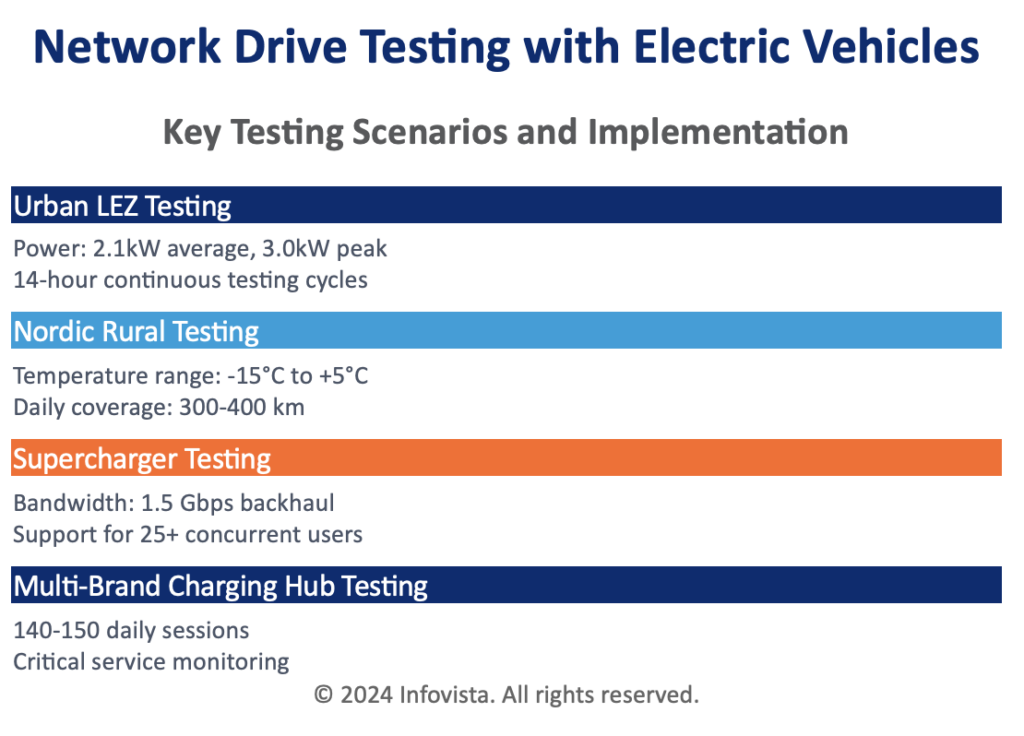Electric Vehicles: Redefining Network Drive Testing
As environmental regulations tighten and sustainability goals gain prominence, the telecommunications industry faces the challenge of reducing its carbon footprint without sacrificing operational excellence. One area where this convergence is particularly evident is network testing, where electric vehicles (EVs) are emerging as a practical solution.
The shift to EVs for network testing is more than just a trend; it’s an adaptation to evolving market conditions. Cities worldwide are implementing stricter emission controls, and companies are increasingly driven—by legislation, shareholder pressure, or customer expectations—to commit to sustainability targets. Simultaneously, end-users are adopting EVs for both personal and business transportation needs. While adoption rates vary significantly across regions, the global mobile industry needs solutions that address environmental and operational demands.

A Power Revolution in Testing Operations
EVs offer a powerful solution for enhancing the efficiency and scope of network testing procedures. Vehicle-to-Load (V2L) technology, now available in many EVs, eliminates the need for traditional auxiliary power systems that use fossil fuels. Modern EVs, such as the Ford F-150 Lightning (with up to 9.6kW of power) and the Hyundai IONIQ 5 (3.6kW), can meet significant power needs for testing equipment. Testing equipment must be configured with careful consideration of power requirements where a typical 5G testing setup draws between 520-780W continuously, including device charging (120-180W), scanner systems (150-200W), data collection computers (150-250W), and climate control for equipment (100-150W).
This built-in power capability enables comprehensive testing equipment configurations and transforms EVs into mobile power stations. This is especially beneficial because it is not at the expense of driving range. For practical EV-based testing operations, high-power V2L systems (7-11.5kW) are especially useful for supporting comprehensive testing configurations.
EVs Shaping Network Usage Patterns
The increasing adoption of EVs for personal and business use is creating new network usage patterns. EV charging locations are becoming significant network usage hotspots, as users spend considerable time there, often 30 to 60 minutes for fast charging sessions. During this wait time, drivers engage in bandwidth-intensive activities like video streaming, conference calls, and web browsing. This behavior presents new challenges for network planning and optimization, making charging locations critical points for network performance validation.
Testing Scenarios for the EV Era
Infovista research has revealed four crucial testing scenarios that address traditional coverage requirements and emerging EV-specific challenges:
- Urban Low Emission Zones: EVs ensure continuous access to regulated areas, allowing prolonged testing hours due to their quiet operation.
- Rural and Remote Locations: The extended range of modern EVs supports comprehensive testing, addressing challenges in remote locations. Some models can cover distances of up to 400km between charges.
- Charging Station Testing: High-demand conditions at charging stations make this a critical focus area. Drivers tend to stream video (45% of usage), browse the web (25%), and video call (15%) while charging, providing real-world network capacity tests.
- Multi-Brand Charging Hubs: These locations, which handle roughly 140-150 daily sessions with peak concurrent usage of 15-20 users, create ideal conditions for testing network performance.
The Evolution of Network Testing
The shift to EV-based testing is driving innovation in methodologies, particularly in route planning that balances network coverage with vehicle range and charging station availability. This has led to more sophisticated testing protocols and automation. As major mobile operators transition to EVs—such as BT Group’s recent commitment to add 3,500 EVs in this year—the industry is seeing increased EV-based testing approaches, especially in urban areas with restricting regulations.

Conclusion: A Sustainable Future for Network Testing
The integration of EVs into network testing represents a significant shift. It is much more than just complying with emerging environmental regulations; it offers new capabilities and opportunities for enhancing testing procedures. As both EV technology and 5G networks continue to evolve, the synergy between these technologies will become increasingly important for effective network testing and optimization. Environmental considerations and data-driven decision-making are now key in these operations. The move to EV-based testing not only meets new regulations but also offers reduced CO2 emissions—between 60-98% based on regional electricity sources. The combination of environmental compliance, advanced power capabilities, and the ability to test critical, peak data usage locations, like charging stations, makes EVs an essential tool for mobile operators planning their testing operations.



